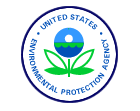
|
EPA 540/AR-93/522
Eco Logic International Gas-Phase Chemical
Reduction Process--The Reaction System
This document is available in the Adobe Acrobat PDF
Format.
Click here
for information about Portable Document File (PDF) Formats.
or
Click here
to directly download the Acrobat Reader.
(To view the PDF, it is recommended that you
use the latest version of Acrobat Reader.)
Eco Logic International Gas-Phase Chemical
Reduction Process--The Reaction System (228K)
ABSTRACT
Eco Logic International Gas-Phase Chemical
Reduction Process--The Reaction System
Applications Analysis Report
EPA 540/AR-93/522
September 1994
The ELI Eco Logic International Inc. (Eco Logic) process thermally separates
organics, then chemically reduces them in a hydrogen atmosphere, converting
them to a reformed gas that consists of light hydrocarbons and water. A scrubber
treats the reformed gas to remove hydrogen chloride and particulates. A portion
of the gas is recycled back into the reactor; the remainder is either compressed
for storage or feeds a propane-fired boiler prior to release to the atmosphere.
The Gas-Phase Chemical Reduction process is designed to treat aqueous and oily
waste streams and soil and sludge contaminated with hazardous organic waste,
such as PCB, PAHs, chlorinated dioxins and dibenzofurans, chlorinated solvents,
chlorobenzenes, and chlorophenols. The Eco Logic process was demonstrated at
the Middleground Landfill in Bay City, Michigan under a Toxic Substances Control
Act research and development permit during October and November 1992. The test
was performed using PCB-contaminated wastewater, waste oil and soil from the
site. Test results yielded a 99.99 percent destruction and removal efficiency
for PCBs during all runs, a 99.99 percent destruction efficiency for a tracer
compound (e.g., perchloroethylene) and a net destruction of trace feedstock
dioxin and furan compounds during all runs. Treatment costs based upon demonstration
data fell between $6-7/gal of liquid treated.
Back to SITE Home Page
Posted February 26, 1999
|

